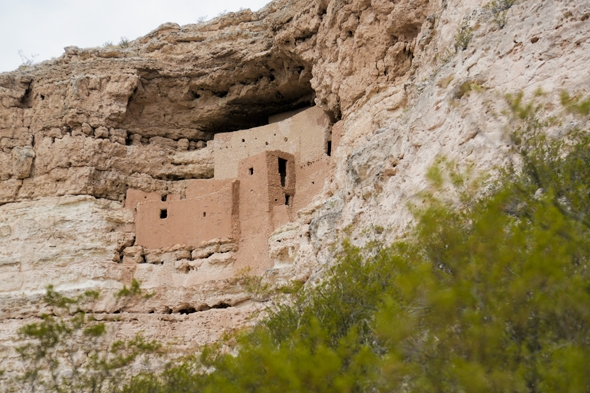
28 Mar Exploring the Montezuma Castle National Monument
Perched high above and nestled in the face of a limestone cliff, rests what remains of what was once the bustling center of the cliff dwellings of the Sinagua people who lived in the area for over 300 years, around 1100-1425 AD. Now called the Montezuma Castle National Monument, the village was actually much more than what it seems at first glance.
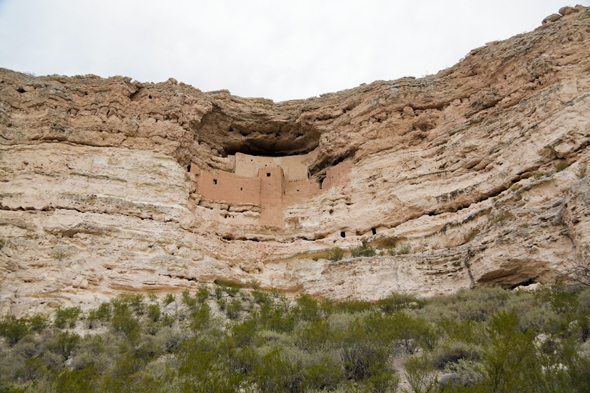
Despite its name, the dwelling is not a castle and it was not connected to the Aztec emperor Montezuma II like the European Americans thought when they discovered it in the 1860’s. The structure was actually abandoned over 100 years before the emperor was even born and it is more of a high-rise apartment than a castle.

Thanks to Roosevelt’s Antiquities Act, the site is now a national monument, and despite the heavy looting that once took place, the dwelling is still very well preserved and it is located about 30 minutes from Sedona. At one time, visitors were able to climb ladders up to the dwelling to take a tour of the 40-50 room complex; however, due to deteriorating conditions of the site, access was stopped in the 1950’s. If you are curious what the structure looks like inside, there is a display that showcases a model of the dwelling and it tells you stories of the castle, the people and what the rooms look like inside.

At first glance, it appears the only structure was the dwelling that is carved into the side of the cliff, but upon further exploration and with the help of the nearby signs, you will see that this area was once much more. There used to be a much larger structure built out from the face of the cliff–the rooms in this extended building were used for a variety of purposes and the base can still be seen today.
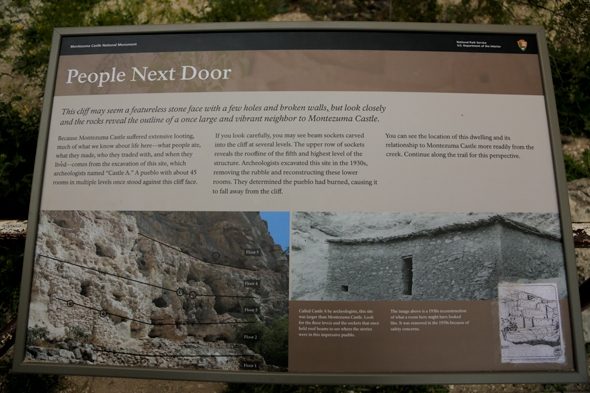
If you look carefully at the limestone wall, you will see the holes where the various support beams were placed to attach the structure to the cliff.
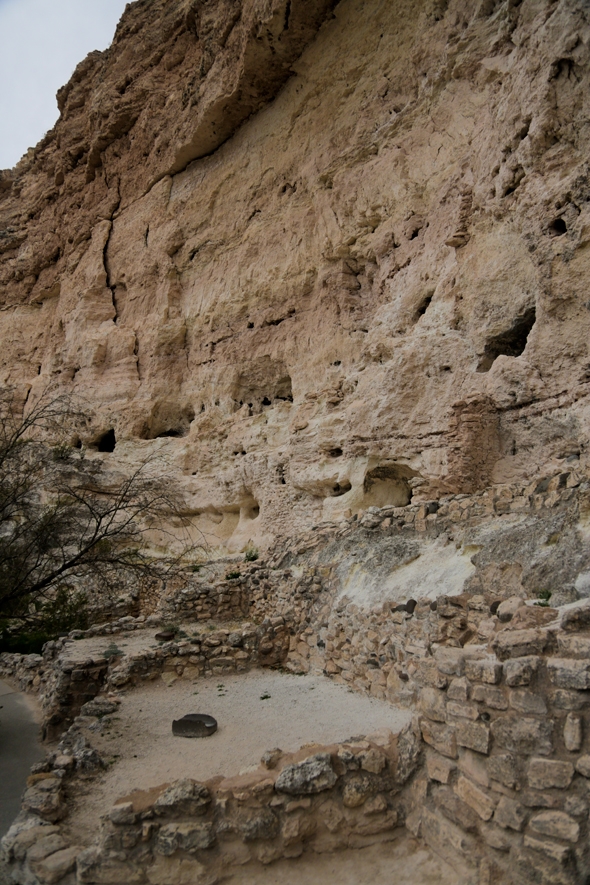
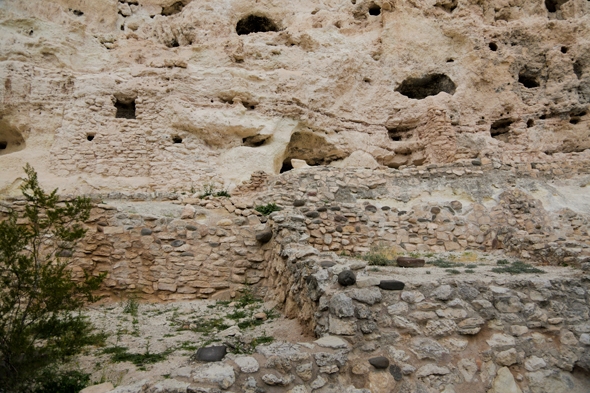
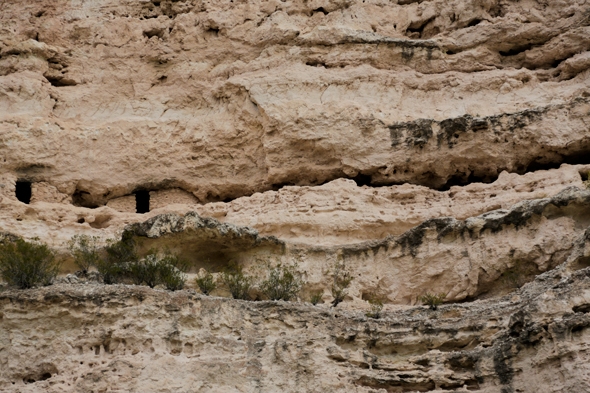
No one knows the truth behind why the Sinagua people abandoned the site and where they went. Some thoughts are that it was due to a drought, a disappearing trade network or maybe even a conflict with the nearby Yapavai. There are Hopi legends that suggest the Sinagua people joined the Hopi people on their mesas, but no one really knows for sure.
Inside the visitor center, you will find a small museum and gift shop to browse, but other than these few highlights, there isn’t much more to see except the Montezuma Well located several miles down the road.
The Montezuma Well is also part of the national monument, and it is a limestone sinkhole with a natural spring. More than a million gallons of water per day flow into the well from the spring, and the well has been providing water to the area for centuries, which is an oasis in the dryness of the surrounding desert. Scientists cannot determine where the water source is coming from despite numerous attempts. There are cliff dwellings along the rim as well as other pueblo ruins nearby, and even today, the site is still considered sacred by local tribes.
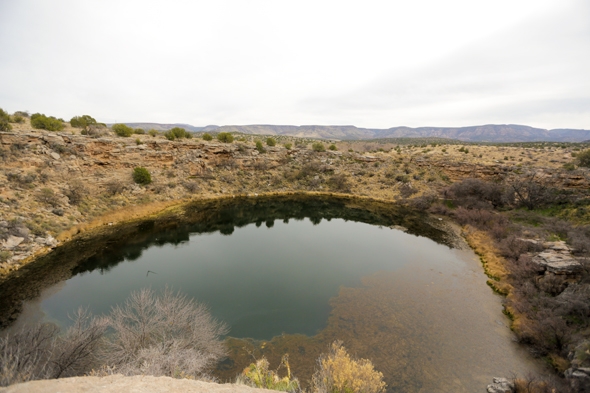
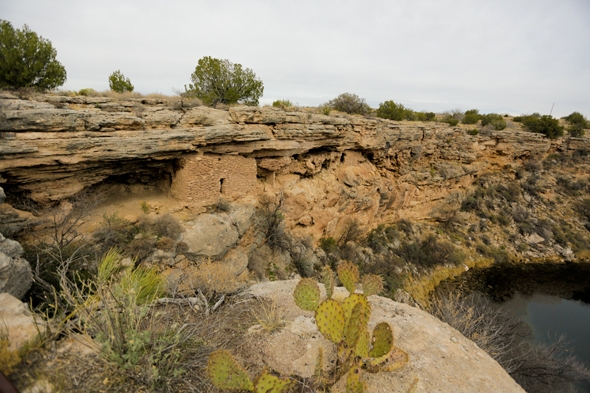
Follow the trail down the nearby staircase for a look to the outlet of the well–it is here that the water flows into Beaver Creek as well as the irrigation channels built over 1,000 years ago. The channels are thought to be as long as seven miles and due to their structure, they require regular maintenance.

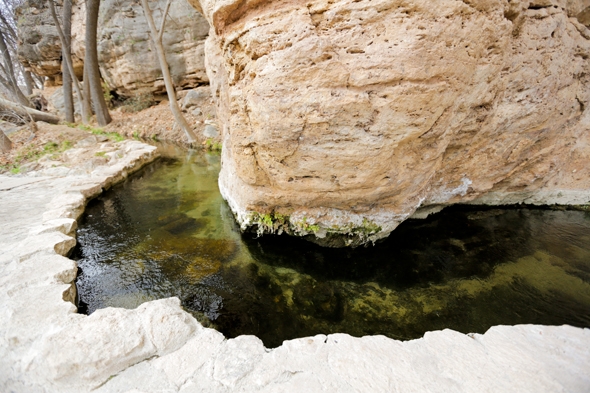

Many people have, and still do, rely on this water supply for their farms and livestock. Although the well provides the main livelihood to the area, it also may be hurting those who use it, as high levels of arsenic has been found in the water and in the bones of livestock from nearby archeology sites. This may have also been a contributing factor to the demise of the people who once lived in this area, but it is still a mystery even today.

